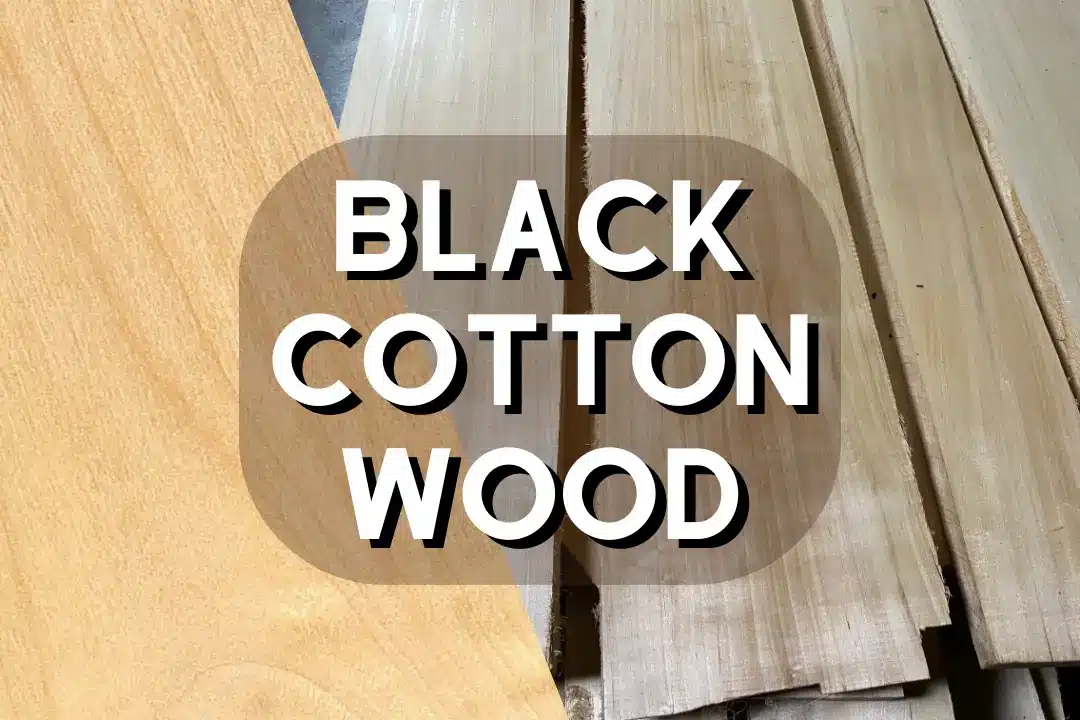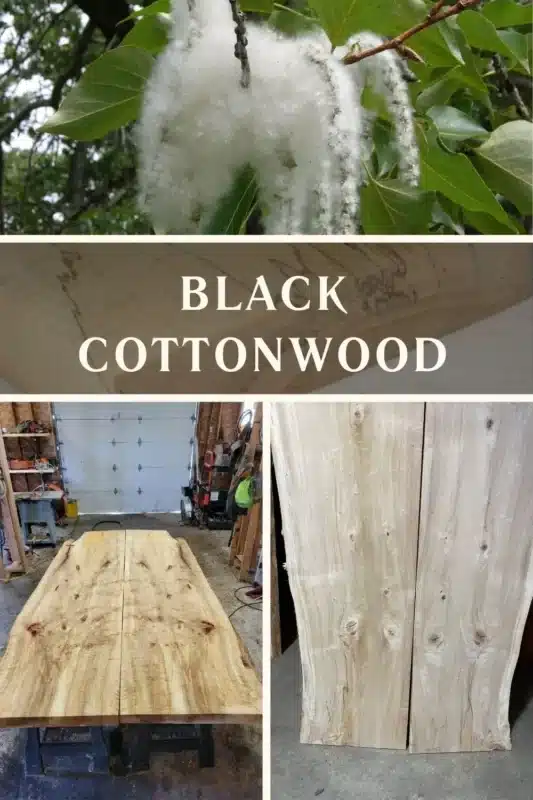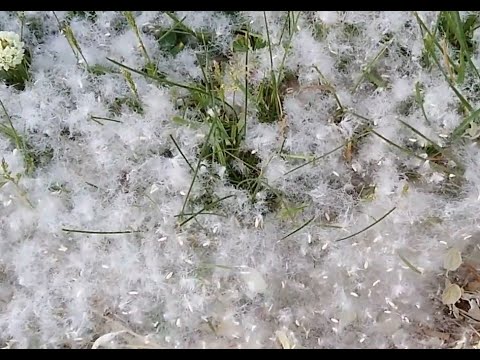
All About Black Cottonwood: A Comprehensive Guide

Did you know the black cottonwood is the largest hardwood tree in western North America? It can grow over 60 meters tall. This tree is not just a beauty in our landscapes. It also plays a key role in the ecology of cottonwood black ecosystems, thriving in areas near rivers.
Being very tolerant of flooding, the lightweight timber shows great adaptability. This makes it crucial in many ecological settings and for restoration projects.
This guide will explore the black cottonwood’s traits and importance. We’ll also look at its lesser-known relatives, like the green cottonwood. You’ll learn about its industrial uses of this light-colored wood and its cultural significance. Understanding this tree is vital for conservation and sustainable practices.
Table of Contents
What is Black Cottonwood?
The black cottonwood, known scientifically as Populus trichocarpa, is a fast-growing deciduous tree. It can grow up to 150 feet tall, making it one of the largest hardwoods in North America. This tree is known for its size and striking appearance, often found in wetlands and by rivers in the western United States.
It has a tall stature and distinctive bark. The bark is thick and furrowed, ranging from grayish-brown to dark brown. Its leaves are broad and heart-shaped, turning from green in summer to yellow in autumn. This tree is important for the environment and has cultural value, plus its wood is highly valued.
| Characteristic | Description |
|---|---|
| Scientific Name | Populus trichocarpa |
| Height | 80-150 ft (25-45 m) |
| Trunk Diameter | 5-6 ft (1.5-2.0 m) |
| Average Dried Weight | 24 lbs/ft³ (385 kg/m³) |
| Specific Gravity | .31 to .38 |
| Janka Hardness | 350 lbf (1,560 N) |
| Rot Resistance | Non-durable, susceptible to insect attack |
| Common Uses | Boxes, crates, veneer, plywood |
General Characteristics of Black Cottonwood
This fast-growing timber is the tallest hardwood tree in western North America. It has impressive height, unique foliage, and distinctive bark.
Size and Longevity
Mature black cottonwoods can grow up to 125 to 150 feet tall. Some can reach 225 feet. Their diameter is usually 48 to 60 inches.
They grow fast, reaching full size in 60 to 75 years. These trees can live for at least 200 years. They have straight trunks, making them valuable for timber.
Leaf and Bark Features
The leaves of black cottonwood are ovate-lanceolate, 3.5 to 7.5 cm wide, and 7 to 12 cm long. They are dark green on top and lighter on the bottom. This makes them look beautiful, even in autumn.
The bark is gray to gray-brown. Older trees have furrowed surfaces and flat ridges. This makes the tree look great in different landscapes.
Geographic Range
The black cottonwood is known for its tall size and role in nature. It grows in western North America. It does best in different habitats that offer the right conditions.
Native Habitats
The black cottonwood’s home is from Kodiak Island in Alaska to northern Baja California. It loves areas near rivers, moist woodlands, and alluvial sites. It grows well from sea level up to over 6,000 feet in some places.
Its fast growth and ability to handle drought make it great for fixing damaged lands. It plays a key role in making these areas healthy again.
Distribution Across the United States
In the U.S., the cottonwood black is most common in the Pacific Northwest. It thrives in the Puget Sound and the Columbia and Willamette river basins in Washington and Oregon. It also grows well in Idaho and Montana.
There are some in California and Utah too. This wide range shows how well it adapts to different climates. It’s very important for the environment.
Biological Features of Cottonwood Black
The black cottonwood has special features that help it survive and grow well in many places. Knowing how it reproduces and grows helps us understand its role in nature.
Life Cycle and Reproduction
The cottonwood starts reproducing when it’s 8-10 years old. It makes lots of seeds every year. These seeds are light and the wind carries them away.
They grow best in wet, disturbed places. This helps them spread quickly, like after floods.
Adaptation to Environmental Conditions
This tree is very good at adapting to its surroundings. It loves wet places and can handle floods well. But, it doesn’t do well in dry times.
It grows best in sunny spots with good drainage. This quick growth helps it spread to new areas fast.
| Feature | Description |
|---|---|
| Seed Production Age | 8-10 years |
| Seed Dispersal Method | Wind |
| Preferred Germination Environment | Moist, disturbed areas |
| Flood Tolerance | High |
| Drought Resistance | Low |
| Light Requirement | Full sunlight |
| Post-Disturbance Behavior | Rapid colonization |
Ecological Importance of Black Cottonwood
Black cottonwood (Populus balsamifera) is crucial in many ecosystems, like riparian zones. It offers vital resources for many animals. This tree is a key player in its habitats, such as riverbanks and marshes.
Role in Riparian Ecosystems
In riparian zones, black cottonwood has many roles. It grows in wet soils, improving soil and water quality. Its roots help prevent erosion and manage floods.
Interactions with Wildlife Species
Black cottonwood has deep connections with wildlife. It provides food and shelter for deer, elk, and birds. It also creates homes for birds and supports aquatic life.
| Metric | Black Cottonwood |
|---|---|
| Growth Height | 20 – 35 meters |
| Trunk Diameter | 30 – 75 cm |
| Leaf Length | 5 – 15 cm |
| Leaf Width | 3 – 9 cm |
| Catkin Length (Male) | 2 – 3 cm |
| Catkin Length (Female) | 8 – 20 cm |
| Fruit Capsule Length | 1 cm |
| Distribution Range | Alaska to Baja California |
Cultural and Ethnobotanical Uses
The black cottonwood holds deep cultural value for Native American tribes. They’ve used its parts for many years. This tree is more than a resource; it’s a symbol of spiritual and healing traditions.
Native American Applications
Native Americans used this versatile poplar wood for medicine. They got resin from the buds to treat fevers and inflammation. They also used the inner bark to make soap and tools.
This shows the tree’s importance in their culture. It’s not just a plant; it’s a key part of their traditional medicine.
Modern Uses in Natural Health
Today, black cottonwood is used in natural health. Its resin is known for its antiseptic properties. It’s used in health products.
Herbalists say cottonwood buds are great for breathing problems like bronchitis. They also contain salicin, which helps with pain and inflammation. This shows how ancient practices still help us today.
| Use | Description |
|---|---|
| Medicinal | Treated ailments such as fevers and pain through the resin and inner bark. |
| Practical Items | Used inner bark to create soap and utility goods. |
| Modern Remedies | Resin used in health products for antiseptic properties. |
| Herbal Treatments | Cottonwood buds recognized for easing respiratory conditions. |
Industrial Uses of Black Cottonwood
Black cottonwood is becoming more popular in many industries. Its light weight and versatility make it ideal for different products. This wood is used in various ways, showing its value.
Commercial Applications
Black cottonwood timber is used in many areas, like making lightweight packaging and plywood. It’s also used in matches and for pallets and packaging crates. This supports green efforts.
Its use as an energy source is growing, thanks to new methods. For example, finger-jointing makes strong beams for buildings. This shows how this Pacific Northwest hardwood is used in construction.
Wood Properties and Features
Knowing about black cottonwood wood is key for its use. It has a fine texture and light color. Its structure is great for nailing, making it perfect for building products.
The wood weighs 23.5 pounds per cubic foot. It can grow up to 45 meters tall. This makes it great for big projects. Here’s a table with important details:
| Property | Details |
|---|---|
| Height | Up to 45 meters |
| Weight | 23.5 pounds per cubic foot |
| Growth Rate | Establishes in 3-4 years; max growth of 15 cm per year |
| Diameter | Can reach up to 4 feet or more |
| Soil Preferences | Requires moist, soft soil for seed germination |
| Uses | Plywood, packaging, energy production, finger-jointing |
Black cottonwood timber is becoming more valuable. Its adaptability and quality make it important in industry.
Management Considerations
Managing black cottonwood well is key to its success. Knowing its growth needs and environmental likes helps a lot. Techniques like these make trees grow strong for timber, like sawlogs and veneer.
Plantation and Cultivation Practices
Planting cottonwood needs careful planning. Trees need space for air and sunlight. Rotating the trees helps them grow back from stumps.
Keeping farms healthy means watching for pests and nutrients. This helps trees grow well.
Site Preparation and Vegetative Management
Getting the site ready for cottonwood is important. This includes soil tests and removing weeds. It’s also crucial to manage weeds to let trees grow.
Using tools or special weed killers helps. This way, young trees can grow big, up to 80 feet tall.

Challenges in Growing
Black cottonwood faces many challenges that can slow its growth and health. Knowing these challenges is key to managing and growing them well. Pests, diseases, and environmental threats can all harm this tree species.
Pest and Disease Issues
Cottonwood pests like beavers and voles can harm young saplings and grown trees. They damage roots and trunks, slowing growth. Insects also bring diseases, making trees more vulnerable.
While disease resistance in this Pacific Northwest hardwood varies, it’s important to watch for health problems. Using pest management strategies is crucial to fight these issues.
Environmental Vulnerabilities
Black cottonwood is sensitive to environmental threats like frost, heavy snow, and fire. Its thin bark makes it vulnerable to fire. Root rot from too much water can also stunt growth.
Ensuring the right amount of sunlight, water, and planting techniques helps. But, staying alert to these environmental dangers is vital.
Black Cottonwood and Firewood Use
Black cottonwood firewood is known for being lightweight and easy to split. But, is cottonwood good firewood? It burns quickly but doesn’t produce as much heat as denser hardwoods like oak. The BTU output for cottonwood black is about 15.8 million BTU per cord. This is much lower than oak’s 32 million BTU.
To get the most out of cottonwood firewood, managing its moisture is key. It should be between 15-20 percent moisture content for efficient burning. This helps in burning more efficiently and reduces smoke, which is rated as medium. With proper seasoning for 12 months, it can provide warmth during cold months.
Cottonwood has high water content, so caution is needed. Green wood weighs about 640 pounds, while dry wood is around 2272 pounds. This high water content means it creates a lot of ash. In gardens, you can use up to 5 gallons of wood ash for every 1,000 square feet.
The average number of cords needed for one season to heat a home using cottonwood is about 6 cords.
Here’s a summarized comparison showcasing the contrasting features of black cottonwood firewood:
| Feature | Black Cottonwood | Oak |
|---|---|---|
| BTU Output (per cord) | 15.8 million | ~32 million |
| Weight (green) | 640 lbs | – |
| Weight (dry) | 2272 lbs | – |
| Seasoning Time | 12 months | 12-24 months |
| Moisture Content (ideal) | 15-20% | 20%-25% |
| Smoke Production | Medium | Low |
In summary, black cottonwood firewood has its uses. It may not be the best for heat, but its ease of splitting and availability make it suitable for some situations.
Conservation and Restoration Efforts
Conserving black cottonwood is key for better riparian area restoration. This tree helps keep riverbanks stable and prevents soil erosion. It’s vital for the health of water ecosystems. This year, over $1.3 million was set aside for wildlife projects in the Kootenay Boundary region.
This money supports a big project to save this Pacific Northwest hardwood. It helps manage the tree sustainably across different habitats.
Rehabilitation of Riparian Areas
Restoring riparian areas is crucial, and black cottonwood’s roots play a big role. It can grow well in disturbed areas, helping ecosystems recover. Projects are happening in many watersheds, with $130,500 for a River Guardian program.
This program aims to improve water quality and habitats in eight watersheds.
Sustainable Practices for Black Cottonwood
Using sustainable practices is vital for black cottonwood’s future. This includes careful harvesting, planting new trees, and monitoring. A project received $30,480 from HCTF and FESBC for conservation.
These eco-friendly methods help keep habitats healthy. They allow for both using the trees and protecting the environment.
| Project | Funding ($) | Description |
|---|---|---|
| Wildlife Conservation Projects | 1,300,000 | Funding for various conservation projects in the Kootenay Boundary region. |
| Black Cottonwood Forest Conservation | 30,480 | Co-funding for a specific project dedicated to cottonwood conservation. |
| River Guardian Program | 130,500 | Program targeting improvements across eight watersheds. |
| Elk Winter Range Enhancement | 83,830 | Restoration efforts over 112 hectares in the Upper Kicking Horse Canyon. |
| Restoration of Habitat | 70,150 | Habitat restoration along 105 km of roads for Southern Mountain Caribou. |
| Basking Log Habitat Improvement | 38,222 | Project enhancing habitat for Western Painted Turtle on Erie Lake. |
| Wetlands Institute | 50,000 | Workshop focused on wetland stewardship projects scheduled for 2024. |
Conclusion
The black cottonwood is a vital tree species with great ecological, cultural, and commercial value. We’ve looked at many aspects of this remarkable tree. This summary shows its ecological roles and wide adaptability.
This Pacific Northwest hardwood thrives in many conditions. This makes it key in supporting riparian ecosystems and many wildlife species.
Key points about cottonwood black include its genetic diversity. Studies show it has a high genetic differentiation and gene flow. This knowledge is vital for conservation and management.
Its use in various industries adds to its value. This makes managing it even more important.
Looking forward, we need to manage this versatile poplar wood well to protect it. This tree boosts biodiversity and is valuable for industries and traditional practices. Sustainable practices are crucial to keep the black cottonwood’s legacy alive for future generations.
FAQs
What is black cottonwood?
Black cottonwood, also known as Populus trichocarpa, is the biggest hardwood tree in western North America. It grows well in wet areas near rivers.
Is cottonwood good firewood?
Cottonwood can be used for firewood, but it burns fast and doesn’t give off much heat. It’s best when it’s dry.
What are the characteristics of black cottonwood?
This versatile poplar wood grows fast and can get very big. It has straight trunks, long leaves, and gray bark.
Where does black cottonwood grow?
It mainly grows in wet places and along rivers. You can find it from Alaska to northern Baja California.
How long do black cottonwood trees live?
These trees can live up to 200 years. They grow to maturity in 60 to 75 years.
What is the ecological importance of black cottonwood?
Black cottonwood is key to wetland ecosystems. It helps animals, keeps soil stable, and boosts biodiversity.
How is black cottonwood used in modern health practices?
Its resin is used in natural health products for its antiseptic properties. It’s also used in herbal remedies.
What industries utilize black cottonwood?
It’s used to make particleboard, plywood, veneer, and paper. It’s also used in furniture.
What management practices are recommended for black cottonwood?
Good management includes spacing trees right and preparing the site. Watch for pests and diseases to keep trees healthy.
What environmental conditions do black cottonwood trees prefer?
They like moist places and lots of sunlight. They don’t do well in drought and need good drainage.

